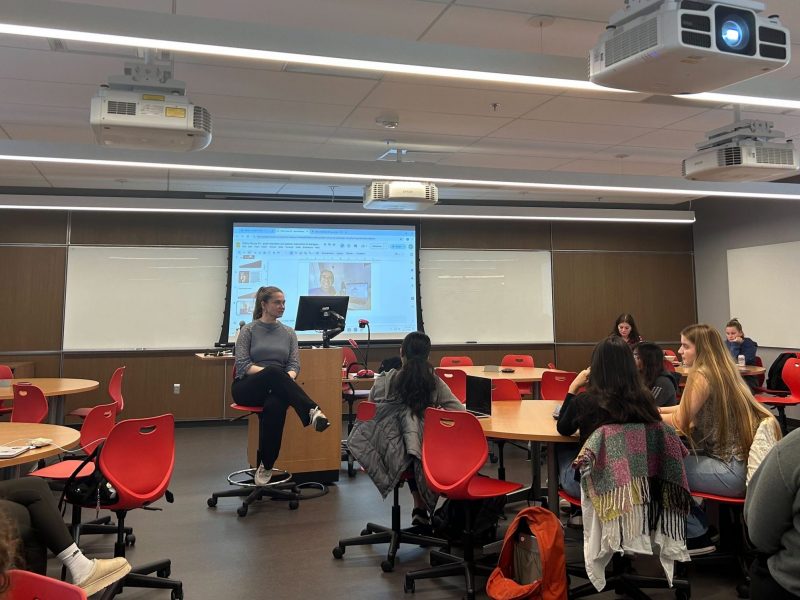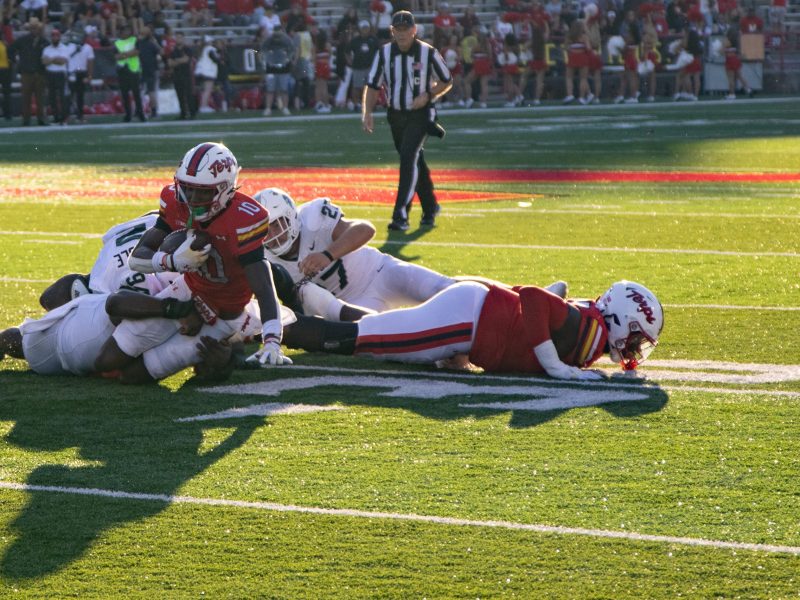
Seen in one of Chris Monroe’s quantum network laboratories in the Computer and Space Sciences Building, this array of vibrant lights and metal modifies and collects pulse-based beams of ions, allowing scientists to isolate and view a single atom.
The University of Maryland’s Joint Center for Quantum Information and Computer Science — a partnership with the National Institute of Standards and Technology — brought together leading quantum information experts from around the world during a workshop last week.
The five-day conference, which allowed attendees to discuss the latest developments in the field of quantum information, began Sept. 28 at the College Park Marriott and Conference Center.
Quantum information relies on quantum physics, which governs reality at the atomic and subatomic levels and offers advantages over Newtonian physics in the realm of computing. A quantum computer bit has more ways of storing information than a conventional 0-or-1 binary bit, potentially enabling faster computing.
READ MORE: University researchers apply quantum information science to physics
There were about 150 registrants, said Andrew Childs, a computer science professor and co-director of the center.
“We want people to learn about what’s going on and encourage them to start new projects,” Childs said. “We had folks from Europe, Australia and lots of corners of the world.”
The discussions and lectures throughout the week revolved around understanding everything that can be done with quantum information, Childs said. Topics included quantum cryptography, quantum computing, communication protocols and quantum complexity theories.
The workshops’ themes changed each day and included Monday’s discussion on quantum algorithms and Friday’s investigation of quantum compilers and experimental physics, said Stephen Jordan, a fellow at the center and a NIST physicist.
The week culminated with a lecture from university professor Chris Monroe on his efforts to construct a real quantum computer, Jordan said.
“With every workshop like this, you’re hoping for people to learn about the latest developments in the field so they can build upon them and so that it will lead to new collaborations,” Jordan said.
On Wednesday, workshop participants had the opportunity to attend a poster viewing at the center, which is located in the Computer and Space Science Building. The posters were designed by the center’s staff and detailed their current research, said center co-director Jacob Taylor, a NIST scientist.
Wednesday’s workshop also allowed attendees to work in front of whiteboards and sketch out ideas they had been developing over the prior two days, Taylor said. Some participants were even able to attend tours of the quantum laboratories in this university’s Joint Quantum Institute.
“To have a chance to take these world experts on the theory side and show them how things work in the lab … it was a really beautiful chance to show them the practical side of what they’re designing and thinking about,” Taylor said.
About 10 workshop attendees will be around for a few extra weeks as a part of the center’s visitors program, Jordan said. This group of researchers was offered an all-expenses-paid trip to work temporarily at this university, using lab spaces and continuing discussions from the workshop.
“It provides us with more people to talk and collaborate with,” Jordan said. “We’re excited because several people took us up on it.”
READ MORE: Math, computer science departments at UMD to get $6 million in funding
Taylor said there are many anticipated results from this year’s workshop, including a continuation of discussions in the future. He added that the center’s team is hoping to begin a series of smaller, more specialized workshops in subsequent years.
“Things were pretty hectic with so many great discussions and ideas blooming,” Taylor said. “We’ve already identified areas we’re particularly interested in that we would like to investigate again next year.”


